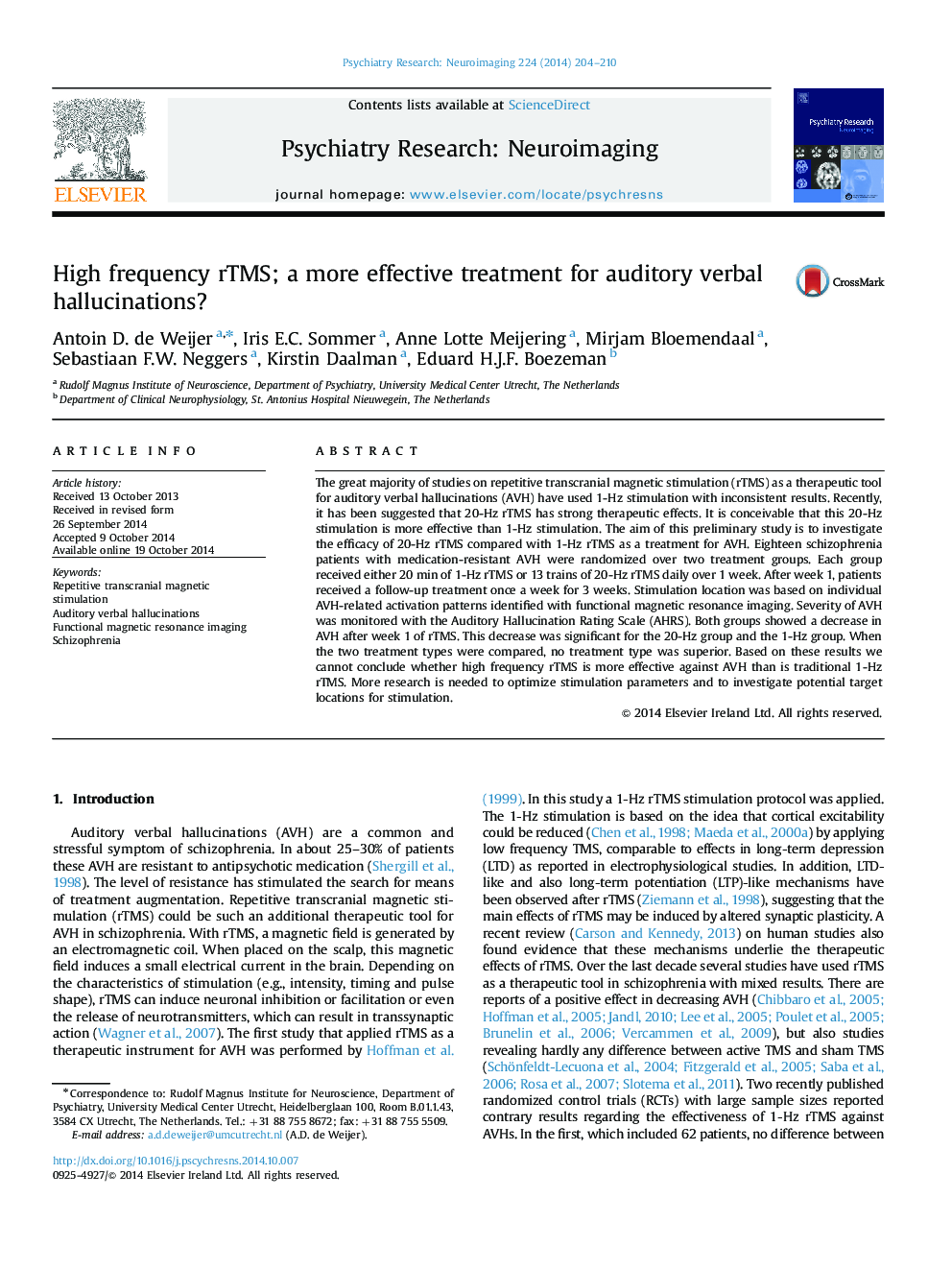| Article ID | Journal | Published Year | Pages | File Type |
|---|---|---|---|---|
| 334751 | Psychiatry Research: Neuroimaging | 2014 | 7 Pages |
•We investigated two different rTMS protocols as treatment against auditory verbal hallucinations.•TMS target locations were defined by using fMRI and neuronavigation.•In both treatment groups a decrease in auditory verbal hallucination was observed.•Based on the results we cannot conclude wether high frequency rTMS is more effective against AVH than to traditional 1 Hz rTMS.
The great majority of studies on repetitive transcranial magnetic stimulation (rTMS) as a therapeutic tool for auditory verbal hallucinations (AVH) have used 1-Hz stimulation with inconsistent results. Recently, it has been suggested that 20-Hz rTMS has strong therapeutic effects. It is conceivable that this 20-Hz stimulation is more effective than 1-Hz stimulation. The aim of this preliminary study is to investigate the efficacy of 20-Hz rTMS compared with 1-Hz rTMS as a treatment for AVH. Eighteen schizophrenia patients with medication-resistant AVH were randomized over two treatment groups. Each group received either 20 min of 1-Hz rTMS or 13 trains of 20-Hz rTMS daily over 1 week. After week 1, patients received a follow-up treatment once a week for 3 weeks. Stimulation location was based on individual AVH-related activation patterns identified with functional magnetic resonance imaging. Severity of AVH was monitored with the Auditory Hallucination Rating Scale (AHRS). Both groups showed a decrease in AVH after week 1 of rTMS. This decrease was significant for the 20-Hz group and the 1-Hz group. When the two treatment types were compared, no treatment type was superior. Based on these results we cannot conclude whether high frequency rTMS is more effective against AVH than is traditional 1-Hz rTMS. More research is needed to optimize stimulation parameters and to investigate potential target locations for stimulation.
